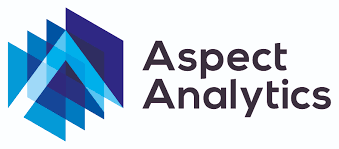Aspect Analytics is an organisation that supports researchers in spatial biology, specifically spatial multiomics. Marc Claesen, Chief Executive Officer of Aspect Analytics, addressed how his company approaches multiomics, the challenges and opportunities in the field, and potential scalability. The company prides itself on its collaborations with big pharma and academic institutes working on a range of therapeutic areas like oncology, immunology, and neurology.
Claesen showcased the Weave platform, a cloud-based solution for data management, analysis, and integration. It is also compatible with various spatial biology assays. Not only does Aspect Analytics support commercially available assay needs in the transcriptomics and proteomics areas but also mass spectrometry.
When studying spatial multiomics, scientists typically have a stack of serial sections, each of which tends to be analysed using different assays. So, researchers end up with different tissue sections, different data formats, different spatial resolutions, and different data content that they aim to consolidate into one measurement. The aim is to analyse the measurement as one object. This ambitious goal brings various challenges.
Claesen explained that within the Weave platform, he developed a process called stack fusion, which consolidates different measurements from serial sections into one integrated data structure for comprehensive analysis. He presented several case studies showcasing the stack fusion process in action.
For example, a collaboration with a team from MD Anderson on high-grade serous ovarian cancer sought to better understand minimal residual disease (MRD) and look for biomarkers that may be of MRD or how chemotherapy resistance occurs. Claesen and the group had access to eight samples with two sections: the first section analysed spatial transcriptomics with a Visium assay, and the second section used spatial proteomics. Another section used mass spectrometry to target glycans, metabolites, and peptides.
So how can one bring this all together? The first step involves image registrations, meaning one has to establish a common coordinate system across lots of different measurements to translate ROIs and compare data points. Then, the platform used mass spectrometry pixels to integrate the omics data into a single structure. The analysis explored relationships between different omics layers and stratified analysis by MRD status. Further analysis found that CAFs (cancer-associated fibroblasts) were localised at specific distances from the tumour and they managed to identify molecular signals unique to tumour cells, CAFs, and immune cells.
Other examples of the stack fusion process in practice included the A*STAR project in Singapore that combined transcriptomics and proteomics from the same tissue section for cell-level integration. The technique was also applied to preclinical PK/PD studies and used mass spec imaging to localise drugs and assess phenotypic effects in tissue.
In summary, Aspect Analytics provides a robust, certified platform for spatial multiomics, enabling deep integration, high-throughput analysis, and collaborative workflows. Claesen reiterated the urgency of streamlining collaboration, computational efficiency, and data reuse when scaling up to high-throughput analysis.
